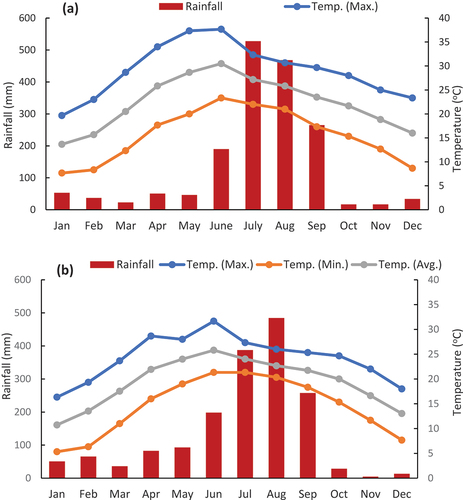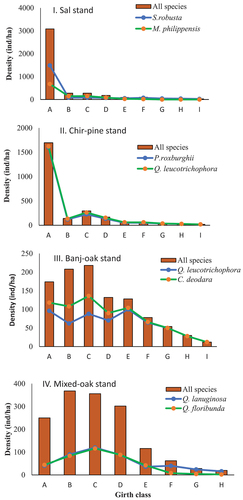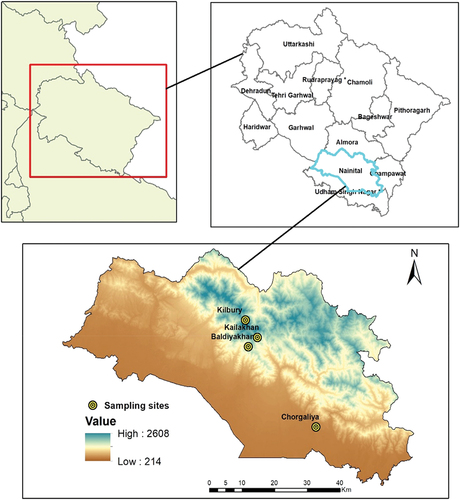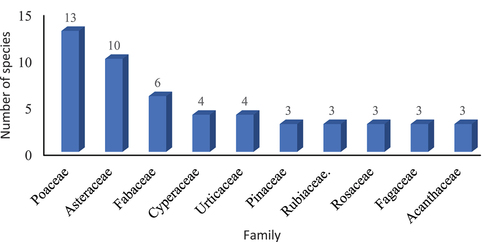Figures & data
Figure 2. Rainfall and temperature patterns of studied (a) subtropical and (b) temperate forest stands during study period 2017–2019.

Table 1. Broad characteristics of investigated forest stands in Uttarakhand, Western Himalayan region.
Table 2. Structural attributes of the forest stands in Uttarakhand, Western Himalaya.
Table 3. ANOVA analysis (F and p value) of vegetation parameter among study sites.
Table 4. Diversity, dominance and evenness indices for tree, sapling and seedlings stratum for different investigated forest stands.
Table 5. Distribution pattern of tree, shrub and herb species across forest stands.
Figure 3. (I–IV): Girth class structure of studies forest stands in the Western Himalayan region (CBH classes represents A: 0–10 cm, B: 10–30 cm; C: 31–60 cm; D: 61–120 cm; E: 120–150 cm; F: 150–180 cm; G: 180–210 cm and H: >210 cm).

Table 6. Regeneration status of species across forest stands.
Table 7. Comparison of present study (density and basal area) with other forest stands of the Himalayan region.


